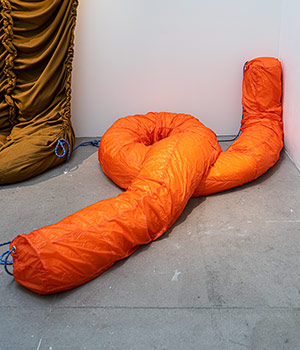Space is the main core element for the design of interiors, scenography, atmosphere, furniture and material/spatial processes. Beyond the spatial perspective, the common denominator behind the presented projects is active exploration and a trust in this process.
Working spatially means relating the project to a spatial context. Even if this space is imaginary, we need to set parameters and create a framework to define this spatial context. A space can be seen as something abstract and can be seen as something that is neutral. In fact, there are no neutral spaces as there is always a power relationship between two entities that determines who owns access. When looking at space from a power perspective, we speak of a “territory” (Mattias Kärrholm, Arkitekturens Territorialitet). The territorial perspective is important for us to be aware of the invisible structures around us. It is with conviction that we, like you, believe that new perspectives on existing spaces and the manipulation of existing spaces could be a tool used to make society a better place to live. This year’s Vårutställning is the first step for graduate students in Spatial Design on their exciting journey into the unknown.
Martin Ku and Reyhaneh Mirjahani, CuratorLab
Space is the main core element for the design of interiors, scenography, atmosphere, furniture and material/spatial processes. Beyond the spatial perspective, the common denominator behind the presented projects is active exploration and a trust in this process.
Working spatially means relating the project to a spatial context. Even if this space is imaginary, we need to set parameters and create a framework to define this spatial context. A space can be seen as something abstract and can be seen as something that is neutral. In fact, there are no neutral spaces as there is always a power relationship between two entities that determines who owns access. When looking at space from a power perspective, we speak of a “territory” (Mattias Kärrholm, Arkitekturens Territorialitet). The territorial perspective is important for us to be aware of the invisible structures around us. It is with conviction that we, like you, believe that new perspectives on existing spaces and the manipulation of existing spaces could be a tool used to make society a better place to live. This year’s Vårutställning is the first step for graduate students in Spatial Design on their exciting journey into the unknown.
Martin Ku and Reyhaneh Mirjahani, CuratorLab



















